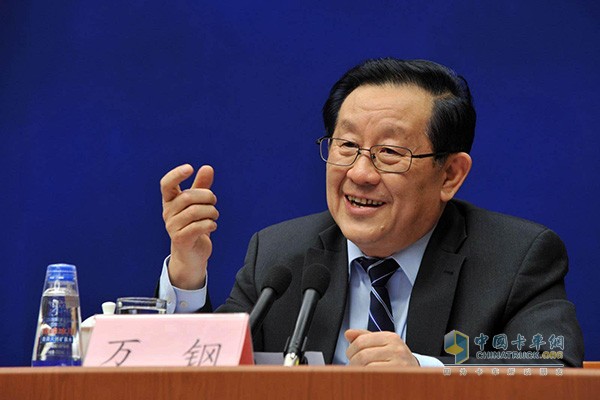 Wan Gang, Chairman of the China Association for Science and Technology
Wan Gang, Chairman of the China Association for Science and Technology
Wangang's words have a pivotal position in the Chinese automotive industry. As early as 20 years ago, Wan Gang began to persuade China to take measures such as providing huge subsidies to manufacturers and buyers to help China become the world's largest electric vehicle market.
At the invitation of the Chinese government, Wan Gang gave up his position in Audi in Germany in 2000 and returned to China. His leap-forward concept of “from internal combustion engine to new energy vehicle†left a deep impression on the State Council. Seven years after returning home, the auto engineer became the first non-Chinese Communist to be appointed Minister of Science and Technology. In 2018, Wan Gang retired from the post of Minister of Science and Technology and became the vice chairman of the National Committee of the Chinese People's Political Consultative Conference.
The 66-year-old man developed three fuel cell vehicles in a series of projects called “Beyond†through research and research on the fuel cell industry during his career as the chief scientist of the China 863 Program in 2003 and 2005. This is actually a national plan launched in March 1986 to help China catch up with the West in advanced technology.
However, due to the obstacles and pressures of early promotion of fuel cell technology, China has subsequently turned to the promotion of hybrid and pure battery vehicle manufacturing.
At the time, these significant difficulties included the fact that battery-powered electric vehicles could be recharged anywhere, while having a stable source of electricity, fuel cell electric vehicles required adequate hydrogen supply, which led to “first chickens or eggs†in the field. The problem: car owners are reluctant to purchase fuel cell vehicles due to the lack of necessary hydrogenation infrastructure. The infrastructure units also lack the power station construction and operation power due to the limited fuel cell vehicle ownership.
But in recent months, Wan Gang has often publicly mentioned and returned to the concept of fuel cell technology. In December 2018, Wan Gang published an article in the "People's Daily" calling for "the timely expansion of industrialization to fuel cell vehicles."
At the Shanghai Auto Show on April 17, 2019, Wangang once again mentioned to the global auto industry executives and Chinese officials: "The fuel cell vehicle has zero emissions, long cruising range, and short fuel replenishment time is the best to meet market demand. select."
Wan Gang believes that it is of great significance to take the lead in promoting fuel cell vehicles in some cities. "The development trend of fuel cells is to be promoted step by step. It may start from certain fields first, because the development of fuel cells requires production, storage, transportation and hydrogenation, and develops like a network." Wan Gang revealed that by the end of 2018, China Nearly 2,000 fuel cell vehicles have been sold, and about 15 hydrogen refueling stations are maintained.
Subsequently, Wangang also held roundtable meetings with global automakers such as Ford, Tesla and Honda to elaborate on the application scenarios of more fuel cell vehicles. Wan Gang said that there are already car companies in China that are trying to stay ahead of the promotion of fuel cell vehicles, which may cause demand for fuel cell vehicles in long-distance buses, high-end cars, including the car.
It seems to be an argument for this point of view. At the meeting, Zu Sijie, deputy chief engineer of SAIC Group, China's largest automaker, said that SAIC is China's only home-owned fuel cell passenger car, commercial vehicle and ready Large-scale production of car manufacturers. In addition, FAW Group, China's oldest automaker, also announced plans to mass produce the Red Flag fuel cell version.
Reading volume: Source: OFweek lithium Author: Cold autumnMahle Filters,Industrial Mahle Filters,Mahle Filter Element,Mahle Replacement Filter
Henan Sinofiltec Technology Co.,Ltd , https://www.airfilters.pl